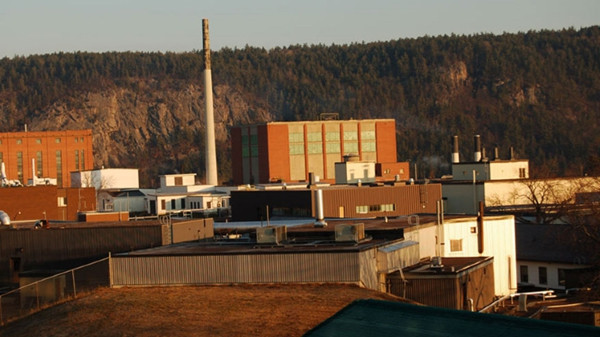A new use of neutron detectors for reactor monitoring and safeguards, developed by Canadian Nuclear Laboratories Ltd (CNL), could potentially be used for the independent verification of nuclear reactor activities and for monitoring the sealed cores of some small modular reactors (SMRs).

The studies were carried out at CNL's NRU reactor, which has since retired from service. (Image: CNL)
Science journal Nature Communications has published a paper on the use of the technique, authored by CNL employees Bryan van der Ende, Liqian Li, David Godin and Bhaskar Sur that presents the results of a research project demonstrating the feasibility of using large-area neutron detectors for monitoring nuclear reactors at distances up to 100 metres outside reactor shielding, as a potential reactor safeguards tool. This enables fissile composition to be verified without accessing the reactor core, and could have important applications in nuclear safeguards and non-proliferation applications.
It could also have applications for monitoring the sealed cores proposed in some SMR designs, CNL said. The organisation has recently filed a patent to protect the technology.
Typical safeguards measures involve periodic inspections, off-line verification and video surveillance of fuel cycle activities. Lead author van der Ende said the CNL approach may offer a more practical and cost-effective solution to reactor monitoring than those in use and had received "very positive" feedback at a number of conferences on non-proliferation and safeguards technology. "Given this response, the patent, and the Nature Communications publication, we believe there’s a bright future for this promising methodology," he said.
"CNL's research demonstrates that neutron detectors have the capability to serve as a viable, economical and effective complement to current reactor monitoring technologies," Kathy McCarthy, vice-president of Science and Technology at CNL, said "While work is ongoing to more thoroughly explore the potential use of this technology, we believe this discovery has real-world applications that could benefit nuclear monitoring agencies and regulatory bodies around the world."
The paper was based on a research project funded through Canada's Federal Nuclear Science and Technology Work Plan, administered by Atomic Energy of Canada Limited. It was carried out under CNL's strategic initiative in nuclear detection, forensics and response.
The research paper can be read at Stand-off nuclear reactor monitoring with neutron detectors for safeguards and non-proliferation applications.